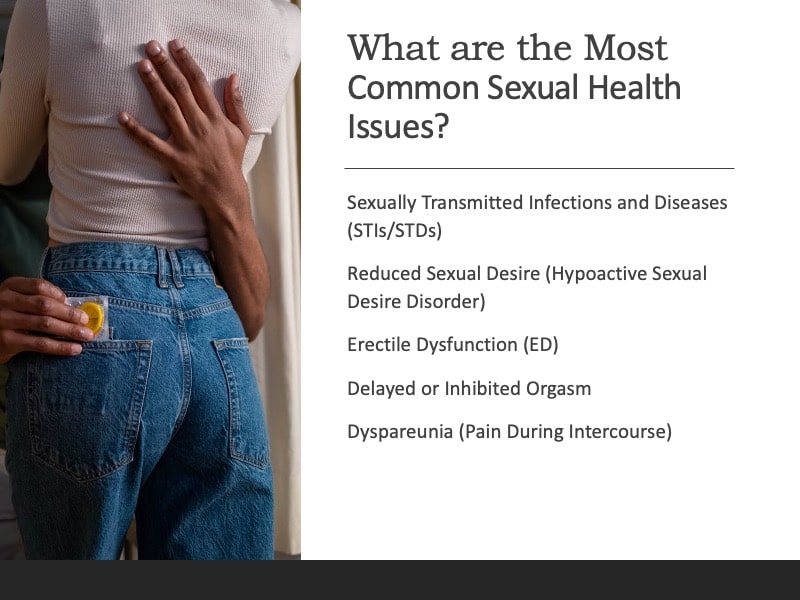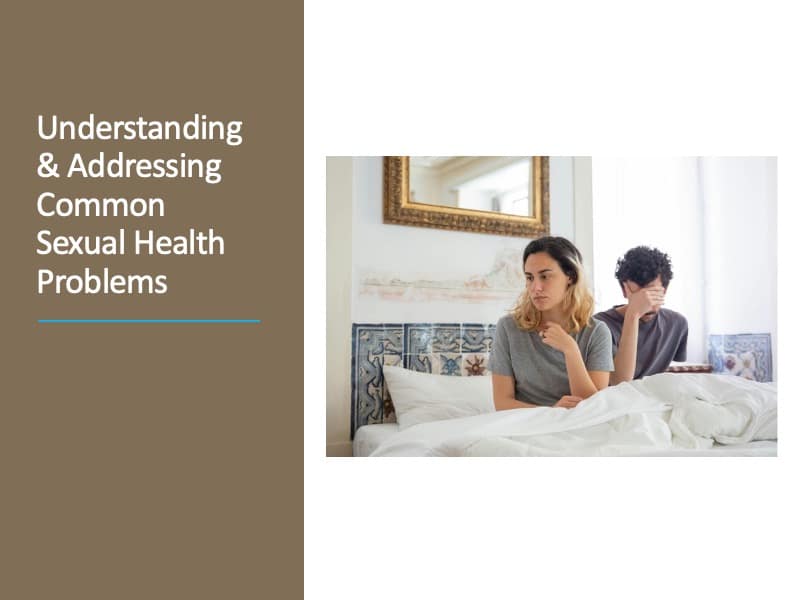Understanding & Addressing Common Sexual Health Problems
Sexual health is a fundamental part of overall wellness, yet it remains one of the least openly discussed aspects of personal health.
For many individuals, concerns related to intimacy, sexual function, or reproductive well-being are met with silence, embarrassment, or misinformation.
However, addressing these topics with clarity and confidence can significantly improve both physical and emotional health outcomes.
Many sexual health problems are far more common than people realize and are often rooted in physiological changes, hormonal imbalances, circulatory or neurological issues, or the effects of medications and lifestyle habits.
Others may stem from psychological stressors or unresolved emotional concerns.
Regardless of the cause, these challenges deserve thoughtful attention and evidence-based solutions—not shame or stigma.
By examining sexual health through an anatomical and medical lens, we can better understand how the body functions, what factors disrupt sexual well-being, and which approaches can effectively restore balance.
Whether you’re navigating low libido, discomfort during intercourse, or managing a diagnosed condition like erectile dysfunction or a sexually transmitted infection, taking a proactive approach to sexual health empowers you to build confidence, comfort, and connection.
In the sections below, we’ll explore the most common sexual health problems affecting both men and women, break down their physiological origins, and discuss practical steps for prevention, treatment, and long-term well-being.
What Is Sexual Health?
Sexual health encompasses physical, emotional, mental, and social well-being related to sexuality.
It is not merely the absence of disease or dysfunction, but the ability to engage in safe, respectful, and satisfying relationships—alone or with a partner.
This includes healthy function of the reproductive system, balanced hormone levels, and unobstructed blood flow and nerve signaling in sexual organs.
Common Sexual Health Issues

Not all sexual health concerns involve infections.
Many challenges are physiological or psychological in nature and can affect individuals regardless of relationship status or sexual activity.
Sexually Transmitted Infections and Diseases (STIs/STDs)
STIs and STDs remain among the most widespread sexual health concerns.
These infections often affect the reproductive system, urinary tract, or surrounding tissues.
While some are asymptomatic, others can result in serious complications if left untreated.
The consistent use of condoms, open communication with partners, and routine sexual health screenings can dramatically reduce the risk of STI transmission.
Accessing early treatment not only protects personal health but also contributes to community-wide prevention.
Common examples of STDs include Human papillomavirus (HPV) and chlamydia.
HPV is the most common STI globally.
While most cases are cleared naturally by the immune system, certain strains can lead to genital warts or even cervical, penile, or throat cancers.
Sadly, there is no cure for HPV, but there are treatments that you can explore to remove genital warts.
Vaccination and regular screenings are crucial preventive tools.
Chlamydia is another common STD that often presents no symptoms but can cause burning sensations, abnormal discharge, and reproductive complications if untreated.
Antibiotics are highly effective, and regular testing helps reduce transmission.
Reduced Sexual Desire (Hypoactive Sexual Desire Disorder)
A decline in libido can result from hormonal shifts (such as menopause or low testosterone), psychological stress, certain medications, or lifestyle factors like poor nutrition and lack of exercise.
For women, estrogen fluctuations during menopause are especially impactful.
In men, androgens such as testosterone play a major role.
Addressing underlying causes through lifestyle changes, hormone therapy, or counseling can restore balance.
Erectile Dysfunction (ED)
Erectile dysfunction is defined as the consistent inability to achieve or maintain an erection sufficient for sexual performance.
It affects approximately 20% of men over the age of 20 and becomes increasingly common with age.
ED often results from vascular issues, hormonal imbalances, or neurological disruption, though psychological stress and certain medications can also be contributing factors.
Treatment options include phosphodiesterase inhibitors (e.g., sildenafil), lifestyle changes, and behavioral therapy.
Phosphodiesterase type 5 inhibitors—most notably sildenafil (commonly recognized by the brand name Viagra)—are one of the most effective treatment options for erectile dysfunction, with clinical success rates of approximately 80% in eligible users.
While sildenafil requires a prescription, accessing it has become more convenient to order prescription medications online through telehealth platforms like Oxford Online Pharmacy, which offers confidential online consultations.
This makes it possible to receive appropriate care without the need for an in-person doctor visit.
However, medication is only one part of the solution.
In many cases, erectile dysfunction is influenced by modifiable factors such as chronic stress, anxiety, excessive alcohol use, smoking, or underlying mental health conditions.
Addressing these root causes through lifestyle changes, counseling, or holistic health strategies may significantly improve outcomes and reduce reliance on medication.
Delayed or Inhibited Orgasm
Failing to achieve orgasm, or anorgasmia, can occur in both men and women due to physiological or psychological reasons.
For men, it may stem from antidepressant use or pelvic nerve dysfunction.
For women, it may be linked to inadequate stimulation, hormonal changes, or pelvic floor dysfunction.
Treatment may involve pelvic floor therapy, hormone evaluation, and improved communication with a partner.
Dyspareunia (Pain During Intercourse)
Pain during penetrative activity is most commonly experienced by women but can also affect men.
For females, causes include vaginal dryness, hormonal changes, infections (e.g., yeast or bacterial), endometriosis, and pelvic floor muscle dysfunction.
For males, conditions like a torn frenulum or penile infection may be the cause.
Medical evaluation is essential to identify root causes and initiate appropriate treatment, such as topical therapies, pelvic physical therapy, or surgical intervention in severe cases.
When to Seek Professional Support
Ignoring symptoms can lead to worsening conditions or long-term reproductive health consequences.
Consulting with a urologist, gynecologist, pelvic floor specialist, or sexual health therapist can provide targeted treatment strategies.
Mental health professionals can also support the psychological side of sexual dysfunction, including performance anxiety and past trauma.
For example, Premature ejaculation, which is commonly defined as ejaculation occurring within one to three minutes of penetration, can be influenced by neurological sensitivity, anxiety, or lack of experience.
Techniques ranging from behavioral therapy, topical anesthetics, or delay delay condoms can improve control.
In some cases, SSRIs may be prescribed to assist with timing regulation.
Final Thoughts: How to Deal with the Most Common Sexual Health Problems
Maintaining sexual health involves much more than addressing problems when they arise.
Preventive care, open dialogue with partners, and ongoing education about the body are foundational for overall wellness.
Regular physical activity, a nutrient-dense, well-balanced diet, adequate sleep, and utilizing natural remedies for stress can enhance hormonal balance and circulation—two pillars of optimal sexual function.



